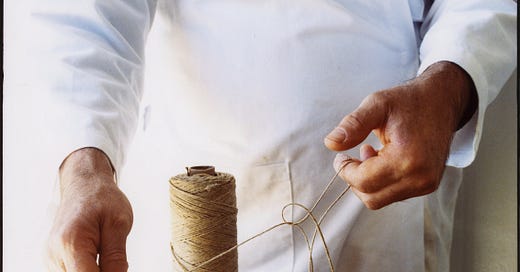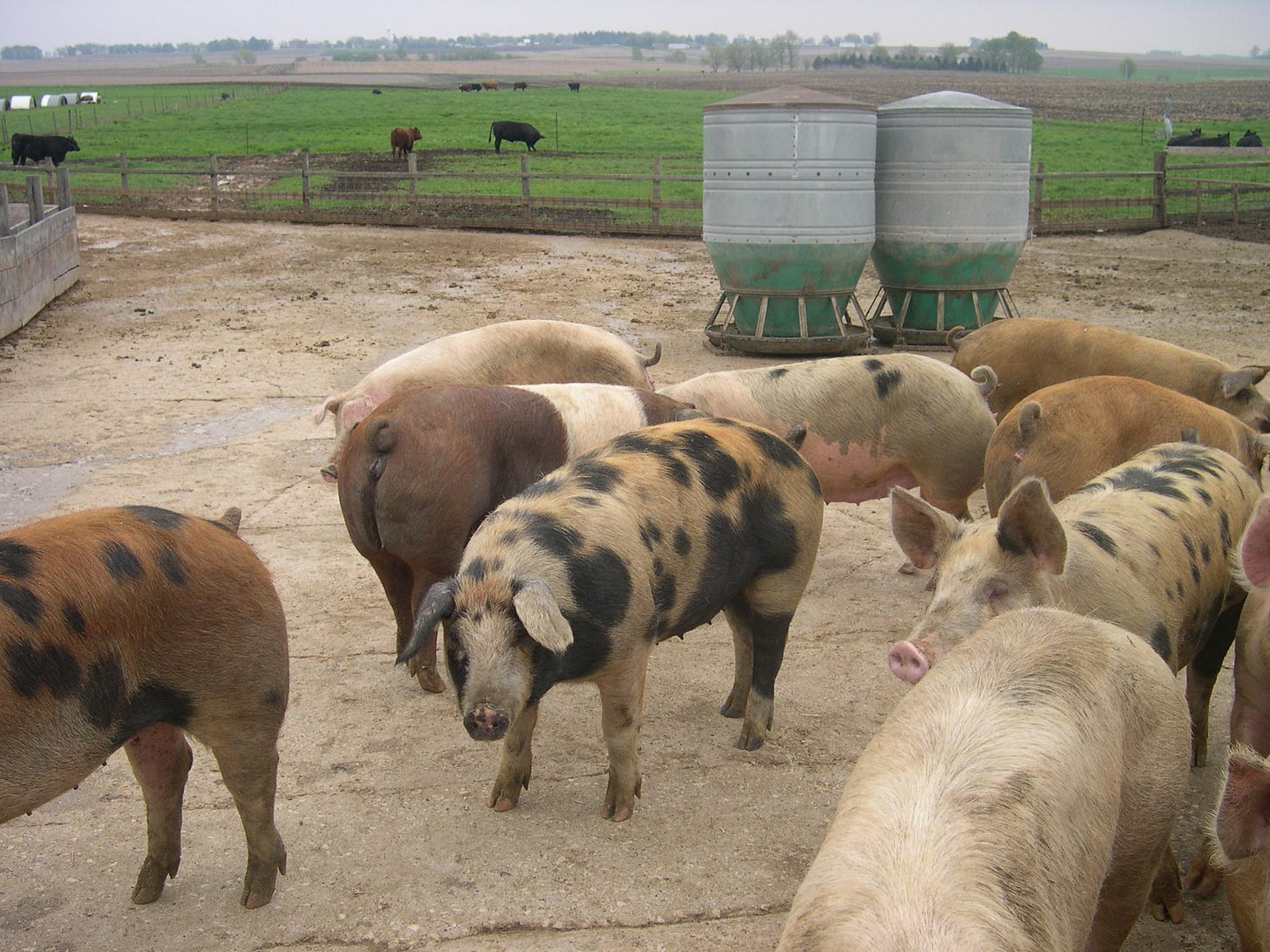What is Salame?
Somebody asked me the other day, “So what is salame really?” It was 16 years ago that I founded Fra’ Mani, now producing hundreds of thousands of pounds per year, so the answer should be simple. But the more familiar I am with salame, the more mysterious it becomes.
Where we source the meat, what tools we use, how we grind it, stuff it, ferment it, and dry and age it are all critical aspects of the pathway to a highly crafted product. But this is only the outline of the story. What happens on the inside of a salame—the development of its aroma and flavor, and its texture—is largely out of our hands.
Salame is one of food history’s spectacular alchemies. That such a process should turn something so ordinary into something extraordinary defies simple explanation. A salame starts out primarily as a bulging sack of water in an animal gut. Curious as it may seem, water makes up about 75% of a salame’s raw weight.
Other main components include proteins, fat, a small amount of carbohydrate, micronutrients, a curing agent, and aromatic seasonings. By the time it has run the course of aging, fermented and dried, salame made in the Italian manner loses 40-50% of its initial water weight. But it never stops developing. Salame is alive to the last bite.
Salame is a preserved food. Salumi (synonymous with charcuterie in French), derived from the Latin word for salt, is the general category of Italian cured meats to which salame belongs. All methods of food preservation are hurdles against wild things running amok, and salting is one of its principal pillars. However, Salame’s wholesomeness also relies upon at least three other forms of preservation; refrigeration, fermentation, and drying are aimed at deactivation of spoilage bugs or those that could potentially cause foodborne illness. In addition, the breed and husbandry of the animal, proper harvesting, post-harvest treatment, and the initial microbial quality of the meat all influence the final result.
Italian salame is made primarily with pork. From raw meat to final glory, salame begins with a pig husbanded by a caring farmer. Pigs are social animals, and providing them with plenty of outdoor access allows them to exercise their instincts to roam and root and wallow in mud puddles to keep cool in hot summer weather (pigs sweat only through their nostrils). Paul Willis, head of the Niman Ranch Pork Company says, “If something tastes good, I think it reflects the health of whatever it is you’re eating. Allowing the pig to behave as naturally as possible is enhancing the eating quality” (quoted in “The Lost Taste of Pork” in the Art of Eating, Edward Behr, Issue No.51, 1999).
When piglets are weaned after sufficient periods on their mothers and allowed to feed on pasture, they get a healthy start, largely removing the need for antibiotics. For all good reasons, regular use of antibiotics should not be allowed with pigs, particularly those destined for human consumption. Beyond what they can get nutritionally from pasture, the wholesome feed regimen is mainly corn and soy balanced with salt, vitamins, and essential minerals. Wholesome feed never contains animal by-products.
Until as recently as the 80s, most pigs were raised outdoors. Now the great majority of pigs spend their brief lives in stifling confinement facilities on giant corporate farms. Bred as units of protein in vertical operations optimized for profit, these pigs share little of the qualities of traditionally raised animals.
On the traditional farm, especially where birthing takes place on pasture, breed matters greatly to the farmer from a handling perspective. It is easier and less perilous to deal with animals with more docile temperaments. Breed also determines the fat-to-lean ratio on a hog, which is essential for whole-muscle salumi such as ham but is less relevant to salame, a calculated blend of ground lean and fat from different pig parts. Otherwise, breeders have aimed at developing animals with a solid-body profile, slightly barrel-shaped, that is raised to a weight of between 275 and 300 pounds on the hoof. Pigs are very efficient converters of feed to flesh and are ready for market in about six months.
Getting Technical
Keep reading with a 7-day free trial
Subscribe to Notice! to keep reading this post and get 7 days of free access to the full post archives.






